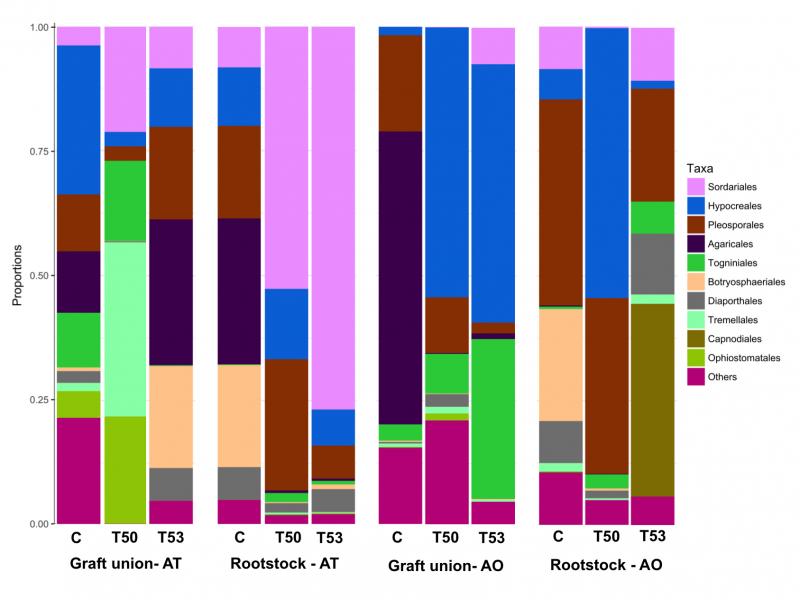Hot-water treatment (HWT) is an efficient, environmentally safe and commercially viable method of suppressing a wide range of pests and pathogens in planting material of grapevine and other crops. The ecology of total fungal communities in grapevine is so far largely derived from studies on culture dependent methods or cultivation-independent rDNA approaches. Sequencing the ribosomal RNA transcripts (rRNA) would rather reveal the functionally and metabolically active important taxa of the fungal community and provide insights into its activity in the wood. In the present study, a researcher from the ICVV in collaboration with researchers from the Universitat Politècnica de Valéncia (Spain) and the Mendel University (Czech Republic) investigated changes in the potentially active fungal communities of internal grapevine wood after Hot-Water Treatment (HWT) in planting material from Czech Republic and Spain at two different times during the propagation process and from two plant zones. We examined fungal communities using both traditional isolation into culture and high-throughput amplicon sequencing (HTAS) of the internal transcribed spacer 2 (ITS2) region in extracted total RNA. HTAS from metatranscriptomic RNA increased the resolution of the fungal community analysis and revealed a highly diverse mycobiota of grapevine wood compared to the traditional method. Fungal diversity differed between grapevine genotypes and showed a temporal variation over the vegetative period. Grapevine planting materials exhibited high fungal diversity after HWT, which demonstrates that the HWT process does not sterilize the internal wood of grapevine. HWT reduced the infection caused by fungal trunk disease pathogens but was not completely effective in eliminating their growth. This study provides important and practically useful insights into the dynamics of active fungal communities in hot-water treated plants, and represents the first study of active fungal communities on grapevine grafted plants by comparing traditional and nextgeneration sequencing methods.
More information:
Eichmeier, A., Pecenka, J., Penazova, E., Baranek, M., Català-García, S., León, M., Armengol, J., Gramaje, D. 2018. High-throughput amplicon sequencing-based analysis of active fungal communities inhabiting grapevine after hot-water treatments reveals unexpectedly high fungal diversity. Fungal Ecology 36:26-38.
https://www.sciencedirect.com/science/article/abs/pii/S1754504818300849








